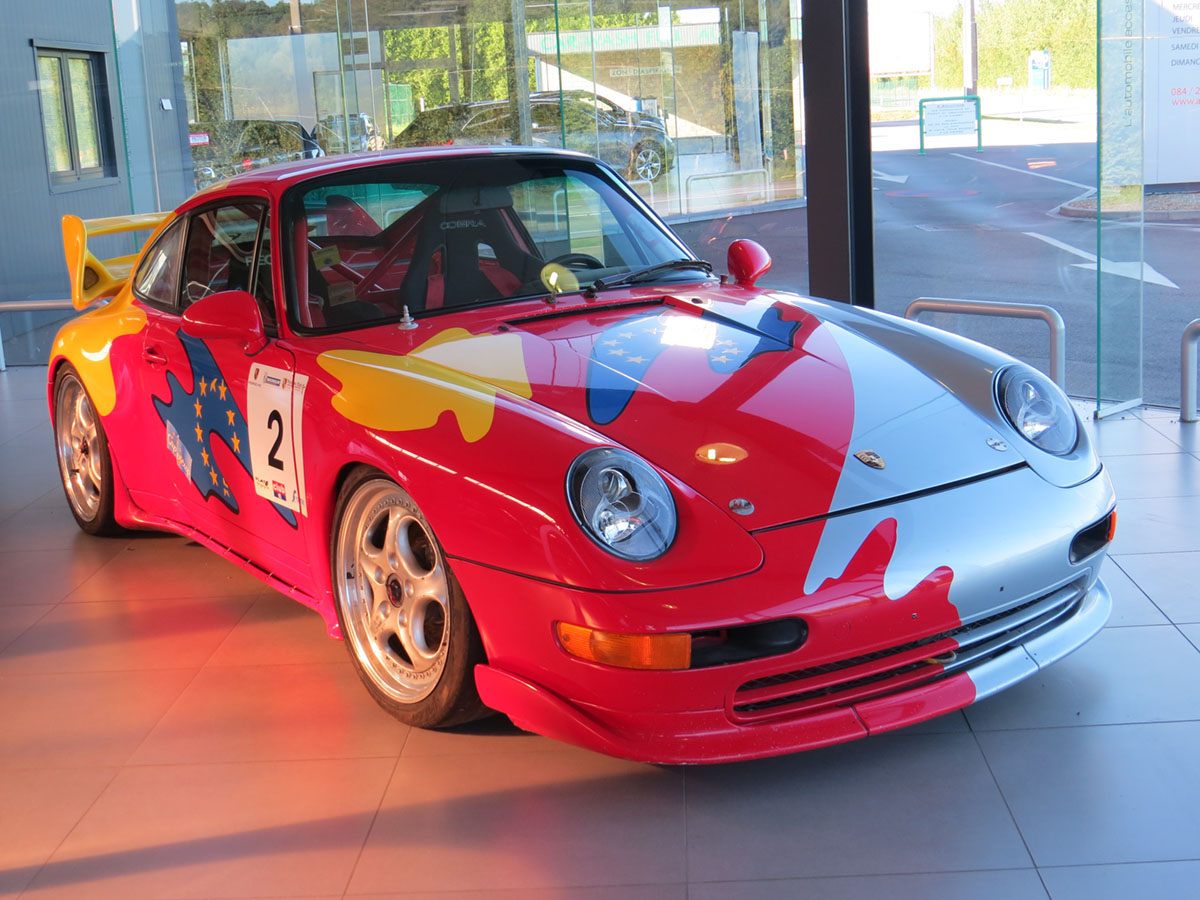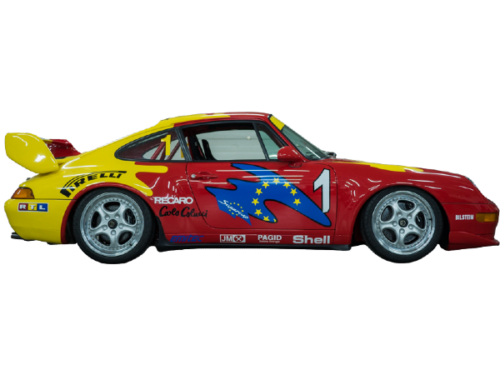(1994 – 1998) Porsche 911 Cup 3.8 (993) – Ultimate Guide
Based on the new 993 Carrera 2 coupe, the 993 Cup 3.8 was developed at Porsche’s competition department to replace the 964-based Carrera Cup 3.6 racer. Aimed squarely at the 1994 Supercup series, it utilized a new 3.8-litre M64/70 engine. This powerplant developed 310 bhp at 6,100 rpm, 40 more bhp than the earlier 3.6 Cup engine, and gave the car a top speed of 280 km/h.
Based on the new 993 Carrera 2 coupe, the 993 Cup 3.8 was developed at Porsche’s competition department, with Roland Kusmaul responsible for the engineering of the new car, which was a genuine ‘no compromise’ race car.
The new engine had a rev limit of 6,900 rpm, but as it utilized many valve-train components from its sister RSR, was capable of turning safely as high as 7,900 rpm. This meant that the engine was low stressed for a race engine and incredibly reliable. The new 6-speed gearbox has very short shifts and was also enhanced for more reliability with steel synchromesh rings. The 3.8 Cup engine type number is M64/70 and gearbox type number is G50/30. The upgraded six-speed G50/30 manual transaxle had 40% limited-slip.
A Matter rollcage was welded in, greatly improving chassis stiffness, but the car was otherwise stripped, losing its power steering, upholstery, carpeting, trim, and sound insulation. A single Recaro racing seat with Sabelt harness, a Momo steering wheel, a fire suppression system, and air jacks were installed.
The suspension was uprated and ride height lowered. Huge ventilated and cross-drilled disc brakes with five-channel ABS fronted 18-inch diameter Speedline three-piece center-lock wheels. An aluminum front hood, deletion of door reinforcement beams, and use of thinner side glass and a plastic rear window brought the 993 Cup racers’ weight down to a mere 1,100 kg. Interestingly, for 1994, these cars ran without front and rear spoilers, essentially in standard bodywork.
Porsche even managed to reduce the overall weight of their new 993 Cup car compared to the previous 964 Cup, with a further 20kg reduction. The 993 Cup weighs a mere 1100kg. The rear quarter side windows were now made from plexiglass. With the exception of the windscreen the remaining glass was all thin lightweight glass. The body work is lighter with no side impact beams in the doors and aluminium bonnet. Inside the car there is no sound insulation, no carpets, no headlining, no power steering, no hand brake, no passenger seat, not even any heating system. The FIA approved Matter supplied roll cage not only makes the car meet the required safety standards, but makes the car very stiff for better chassis response.
The brakes for the 993 Cup car were also improved with large front and rear brake calipers and disks, the latest 5 channel ABS system with motorsport control unit tuned specifically for the slick tires fitted to the car. The new springs and dampers are much stiffer than the 964 Cup version, and the ride height of the 993 Cup car is set at 70mm lower than the 993 Carrera 2 it is based on.












